Search Images
Browse Content (p. 364)
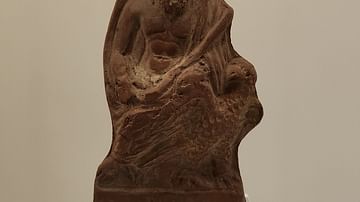
Image
Figurine of Zeus with Eagle
Zeus is seated behind an eagle, one of the god's attributes. This iconographic type is unknown in Greece and draws its inspiration from a motif of oriental origin, of a god mounted on a bird. From Egypt. Mid-2nd century CE. Made from...
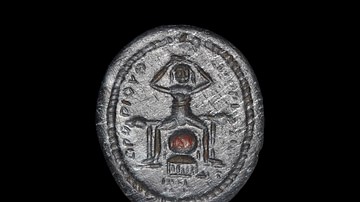
Image
Magical Gem Depicting Childbirth
Magical gem depicting a pregnant woman squatting naked over a birthing stool. Late Roman Eastern Mediterranean, 3rd century CE.
The British Museum, London.
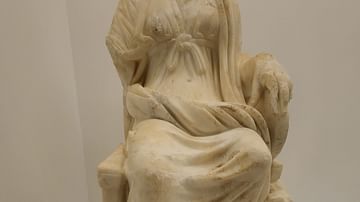
Image
Statuette of an Enthroned Cybele Flanked by Lions & Holding a Drum
Cybele, the Great Mother Goddess of Asia Minor, was holding a phiale (a shallow libation bowl) in her missing right hand. The lion and the drum, which was played during rites in Cybele's honour, were the attributes of the goddess. 3rd-century...
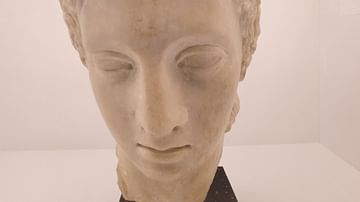
Image
Head of a Statue of Paris
Paris, son of Troy's King Priam and Hecuba, is wearing a Phrygian cap, the characteristic headgear of shepherds. According to the myth, an interpreter of dreams foretold that the child of Hecuba would bring the destruction of Troy and must...
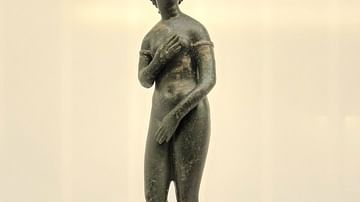
Image
Statuette of Nude Aphrodite
It renders the goddess in the pudica type that copies the famous state of the Capitoline Venus.
From East Mediterranean. 1st-2nd century CE. Made from bronze. (Hellenic Museum, Melbourne, Victoria).
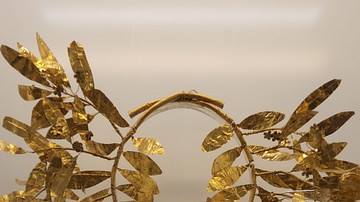
Image
Myrtle Wreath
Gold wreaths that imitate natural ones come mainly from royal tombs in Macedonia, Asia Minor and southern Italy. The crowning of the dead with a wreath signified that they were worthy of being rewarded with eternal life after death. The...
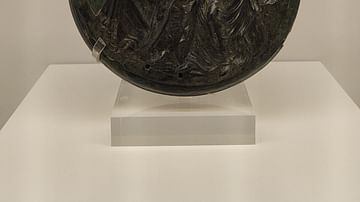
Image
Folding Mirror
The cover bears a relief representation of Dionysos flanked by two Maenads or Adonis flanked by Aphrodite and Persephone. The female figures wear silver jewellery. Folding mirrors consist of two two bronze discs connected by a hinge. Their...
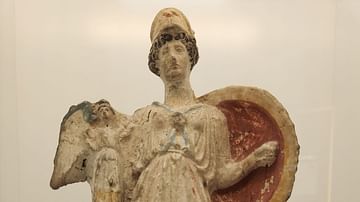
Image
Boeotian Figurine of Athena
A rare polychromatic terracotta version of the chryselephantine statue of Athena Parthenos, which stood in the Parthenon and was a work of Pheidias, of the years 447/6-438 BCE. Perhaps from Vathy, Avlis District, Boeotia. Boeotian workshop...
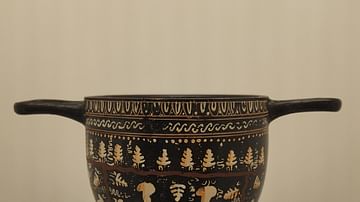
Image
Apulian Skyphos in Gnathian Style
Drinking vessel decorated with a female mask, probably a theatrical hetaira mask, and vine leaves, made in the workshops of Apulia in southern Italy, 340-320 BCE. The polychromatic decoration on the black varnish coating of the vase is a...
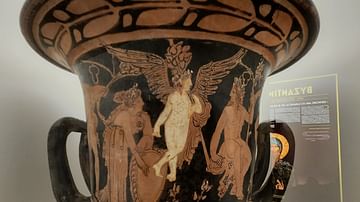
Image
Attic Red-Figure Calyx Krater
It bears the representation of the god Dionysos, Ariadne and the winged god Eros between two Satyrs; members of Dionysos' troupe. The sacred wedding of Dionysos and Ariadne is portrayed on the krater. It is the 5th century BCE archetype...